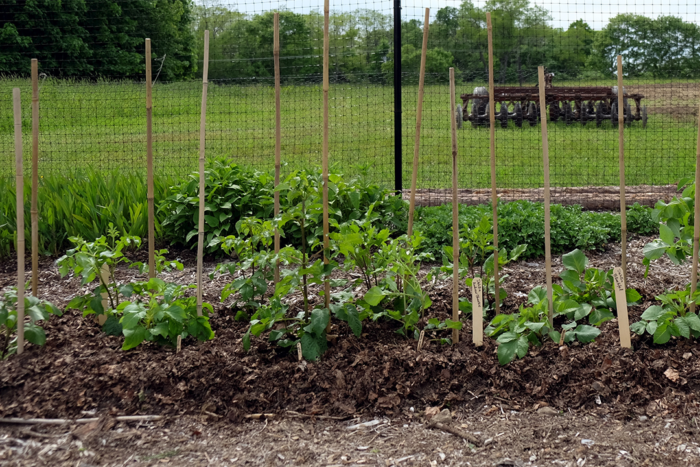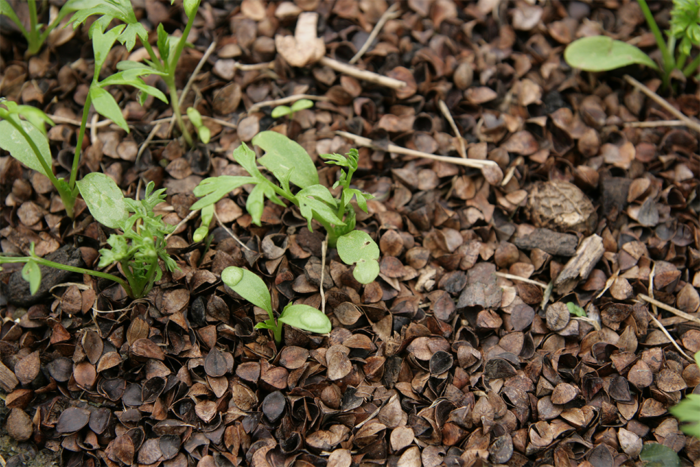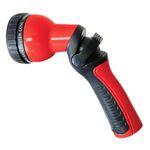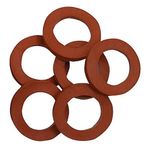
When spring is as cold and wet as this one has been, it can be hard to imagine the soil will ever dry out. But here in the Northeast, we know how widely the pendulum swings. A rainy spring will likely be followed by periods of summer drought. To help keep your garden from wilting between now and the occasional summer thunderstorm, spread a layer of mulch after planting.
Mulching regulates temperatures and slows evaporation. Weed suppression is an added benefit, but it’s never the be-all, end-all of mulching. Some weeds will always find a way through. Contrary to popular belief, mulching doesn’t affect soil pH.
Not all mulches are created equal. Some are better suited to your garden’s design and plants’ needs than others. Some are free, or will at least fit your budget, while others are a splurge.

Shredded leaves make an attractive moisture barrier. The forest has the right idea by recycling discarded organic matter. A loose 1- to 3-inch layer of shredded leaves left over from last fall will allow the rain in and some self-sowers to grow through. Over time, leaves will break down and work into the soil, improving its structure and adding nutrients.
Salt marsh hay and seaweed may be readily available if you live near the coast. Salt marsh hay has a coarse texture best suited to vegetable gardens. Seaweed is not particularly elegant either, but it introduces all kinds of micronutrients to the soil. Consult the authorities before harvesting from shorelines, as there may be restrictions and protections.
Arborist wood chips are a cheap or even free choice for application around trees and shrubs. Wood chips may tie up nitrogen at the soil surface, making it less ideal for vegetable gardens or ornamental gardens that are heavy on shallow-rooted annuals and self-sowers.
Bark mulch is also best used under shrubs and trees rather than a mixed garden with shallow-rooted plants. Thick layers become impervious to rain (counterproductive!) so scuff it up periodically, and scrape the old off before adding new. Say no to the dyed stuff.

Buckwheat hull mulch is my favorite after shredded leaves. It is lightweight and has an elegant uniform texture that allows rain in, self-sowers up, and aerates the soil as it incorporates over time. It is similar in looks to cocoa shell mulch, but it doesn’t get moldy and isn’t toxic to dogs. Its biggest liability is price. A 2-cubic-foot bag, which covers about 30 square feet at a 1-inch depth, runs upwards of $20.
Of course, the more plants fill in, the less mulch you’ll need to cover the bare bits. A thickly planted garden does the job of shading and cooling the soil and makes efficient use of available moisture to withstand the seasons’ extremes—beautifully.
—Kristin Green is author of Plantiful: Start Small, Grow Big with 150 Plants That Spread, Self-sow, and Overwinter, and gardens in Bristol, Rhode Island.
Fine Gardening Recommended Products

Dramm Revolution Adjustable 9-Pattern Metal Hose Nozzle
Fine Gardening receives a commission for items purchased through links on this site, including Amazon Associates and other affiliate advertising programs.
- Ergonomic insulated grip
- Maximum pressure of 90 PSI
- Fully adjustable spray pattern
- No trigger lock

Gilmour 811673-1001 Sprinkler
Fine Gardening receives a commission for items purchased through links on this site, including Amazon Associates and other affiliate advertising programs.
- Adjustable collar for partial- to full-circle coverage
- Dial precisely sets spray distance
- On/off switch eliminates trips from sprinkler to spigot

Gilmore Rubber Hose Washer 10pk
Fine Gardening receives a commission for items purchased through links on this site, including Amazon Associates and other affiliate advertising programs.
- Clip of 10



















Comments
Log in or create an account to post a comment.
Sign up Log in